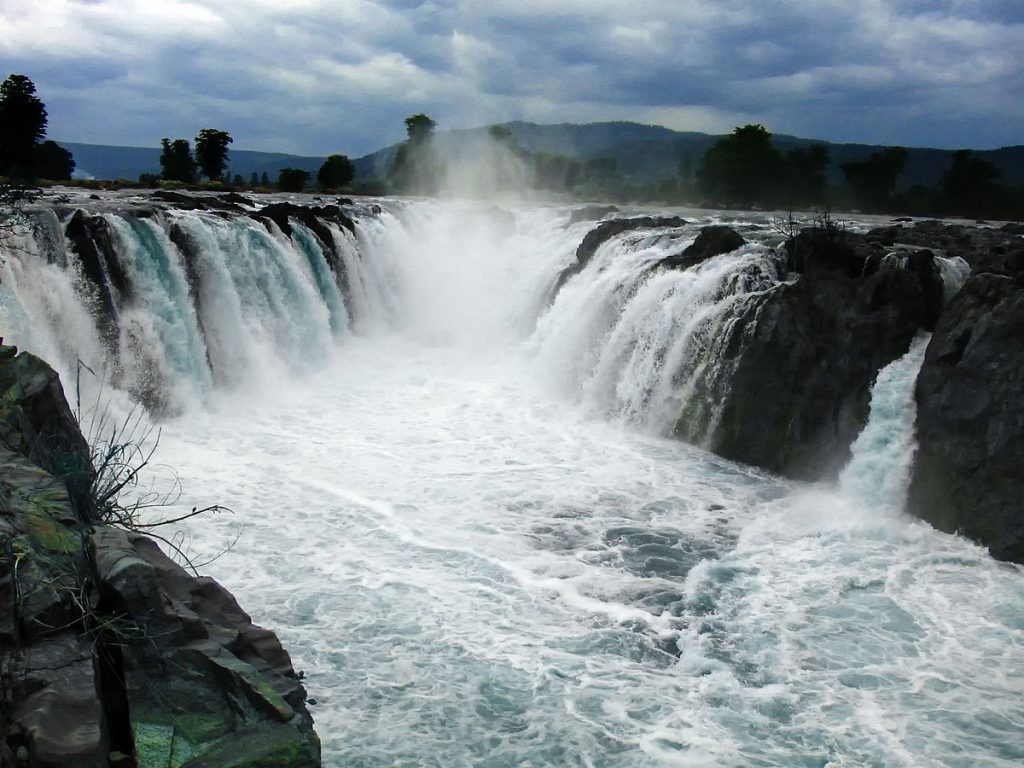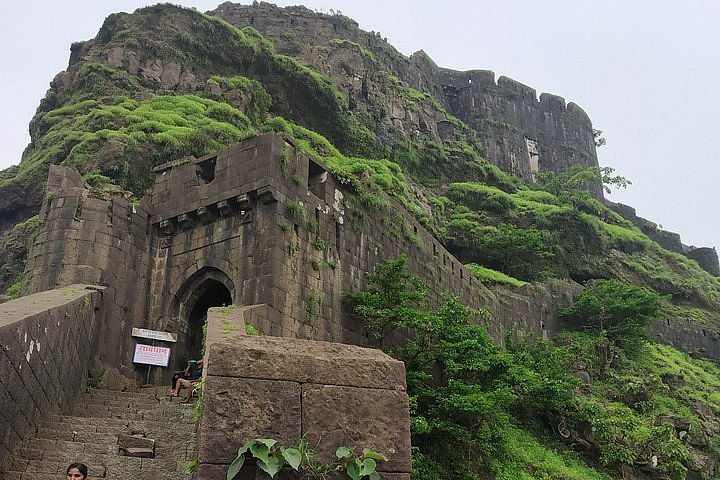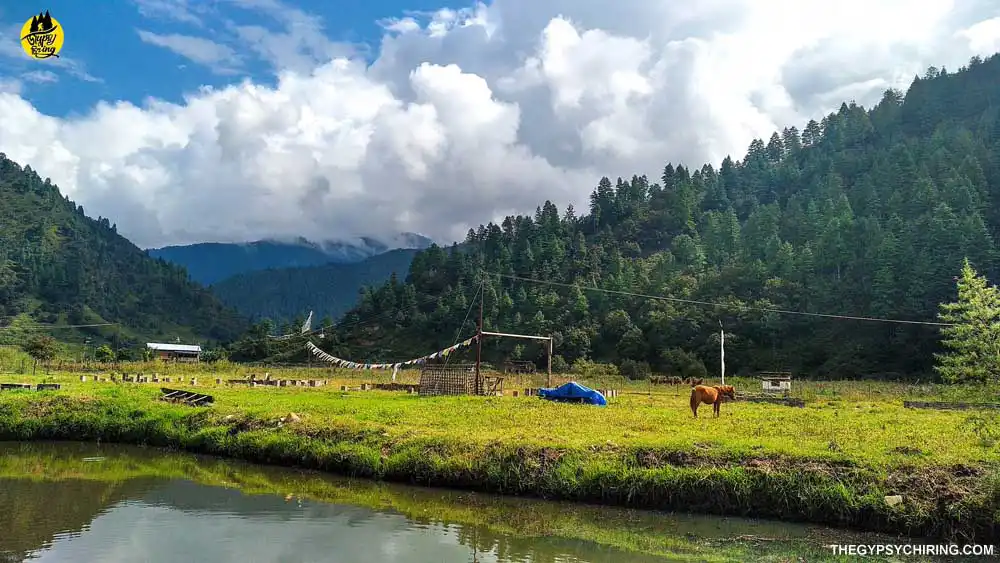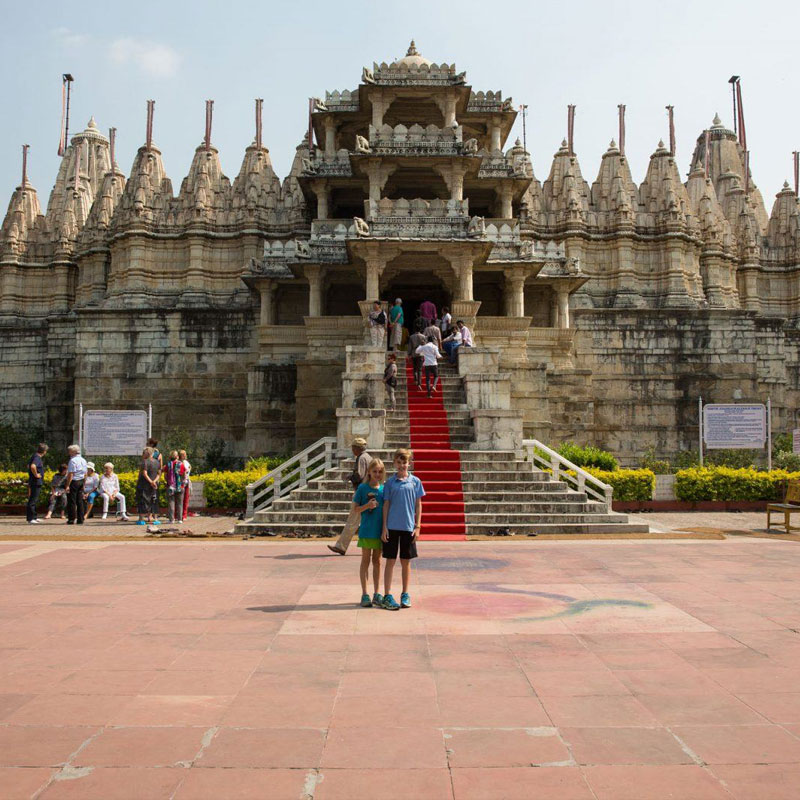Jyotiba Temple in Kolhapur is a revered Hindu shrine. It’s dedicated to Lord Jyotiba, an incarnation of Lord Shiva.
Nestled in the serene hills of Kolhapur, Jyotiba Temple stands as a beacon of spirituality and heritage. Devotees and tourists alike flock to this ancient temple to seek blessings and admire its architectural beauty. The temple’s rich history, dating back centuries, adds to its mystical allure.
Vibrant festivals and rituals conducted here create a mesmerizing atmosphere, drawing visitors from far and wide. Whether you’re on a spiritual quest or exploring cultural landmarks, Jyotiba Temple offers a unique blend of devotion and tradition. Join us as we delve into the fascinating aspects of this sacred site and uncover what makes it a must-visit destination in Kolhapur.

Credit: www.incredibleindia.gov.in
Introduction To Jyotiba Temple
The Jyotiba Temple in Kolhapur is a fascinating destination for spiritual seekers and history enthusiasts. Nestled amidst scenic surroundings, this temple offers a unique blend of ancient traditions and architectural beauty. Jyotiba Temple is dedicated to Lord Jyotiba, a revered deity in Maharashtra. This sacred place attracts thousands of devotees every year.
Historical Significance
Jyotiba Temple has a rich history that dates back to the 18th century. It was built by Ranoji Shinde, a Maratha warrior. The temple stands as a testament to the Maratha dynasty’s devotion to Lord Jyotiba. Many believe the deity here is an incarnation of Lord Shiva. The temple’s architecture reflects the Maratha style, with intricate carvings and sturdy construction.
Legend has it that Lord Jyotiba helped Goddess Mahalaxmi in defeating the demons. This legend adds a mystical charm to the temple’s history. Visitors often feel a profound sense of spirituality and connection to the past.
Location And Accessibility
Jyotiba Temple is located in the Panhala range, about 17 kilometers from Kolhapur city. The temple is situated at an altitude of 3124 feet above sea level. This elevation offers visitors breathtaking views of the surrounding landscape. The temple’s serene environment makes it a perfect spot for meditation and relaxation.
Reaching the temple is convenient. The nearest airport is Kolhapur Airport, approximately 25 kilometers away. Kolhapur Railway Station is also nearby, making travel easy for pilgrims. Local buses and taxis are available from Kolhapur city to the temple. The temple is accessible throughout the year, but visiting during the annual fair adds to the experience.
Architectural Marvels
Jyotiba Temple in Kolhapur is a stunning architectural marvel. Its vibrant pink structure stands out, attracting many visitors. Rich in history, it offers a unique cultural experience.
Exploring the Architectural Marvels of Jyotiba Temple Kolhapur The Jyotiba Temple in Kolhapur is not just a spiritual haven but also an architectural wonder. As you step into this sacred space, you can’t help but be mesmerized by the intricate details and the grand structure that stands as a testament to the craftsmanship of bygone eras. Let’s delve deeper into the architectural marvels that make this temple a must-visit.Temple Structure
The structure of Jyotiba Temple is a sight to behold. The temple is built using the classic Hemadpanthi architectural style, which is known for its unique blend of practicality and beauty. The temple’s layout includes several shrines, each dedicated to different deities, making it a sprawling complex that invites you to explore. The robust stone walls and columns exhibit a sense of strength and permanence. As you walk through the temple, notice how the spaces are designed to allow natural light to filter in, creating a serene and divine ambiance. The large courtyard is perfect for congregational gatherings, adding to the temple’s communal atmosphere.Intricate Carvings
The carvings on the walls and pillars of Jyotiba Temple are nothing short of spectacular. Each carving tells a story, depicting scenes from mythology and the lives of deities. The intricate designs are not just decorative; they are deeply symbolic, offering insights into the spiritual and cultural beliefs of the time. Take a closer look at the detailed carvings of animals, flowers, and geometric patterns. These are not just random decorations but carefully crafted pieces of art that reflect the skill and dedication of the artisans. The carvings are so detailed that you can spend hours just admiring the finesse and precision. One of the most fascinating aspects is how these carvings have stood the test of time. Despite being centuries old, they still retain their original charm and grandeur. This resilience adds to the temple’s allure, making you wonder about the history and stories that these walls have witnessed. So, what do you find most intriguing about temple architecture? Is it the grand structure or the intricate carvings that capture your attention? When you visit the Jyotiba Temple, take your time to appreciate these architectural marvels. Each element, from the robust structure to the detailed carvings, offers a glimpse into a rich cultural heritage. It’s a place where spirituality and artistry converge, creating an experience that is both visually and emotionally enriching.Legends And Myths
Jyotiba Temple in Kolhapur is steeped in legends and myths. The temple is dedicated to Lord Jyotiba, believed to be an incarnation of three deities. Many devotees visit to seek blessings and experience the mystical energy surrounding this ancient site.
The Jyotiba Temple in Kolhapur is a stunning blend of spirituality and history. Nestled in the hills, this temple is not just a place of worship but also a treasure trove of fascinating legends and myths. These stories have been passed down through generations, adding to the temple’s allure and mystique.Mythical Origins
The origins of Jyotiba Temple are steeped in myth and legend. According to local lore, Jyotiba, an incarnation of Lord Shiva, descended to the earth to vanquish evil forces. Locals believe that the temple was built to commemorate this divine intervention. It’s said that Jyotiba, armed with his trident, defeated the demons that plagued the land, restoring peace and prosperity. When you visit the temple, you can feel the weight of these ancient tales in the air. The architecture itself seems to whisper stories of divine battles and heavenly victories. Have you ever wondered how such legends shape our understanding of history and spirituality?Stories Of Jyotiba
The stories surrounding Jyotiba are both intriguing and inspiring. One popular tale recounts how Jyotiba came to the aid of the local people when they were besieged by demons. He fought valiantly, using his divine powers to protect the innocent. The locals, in gratitude, built this magnificent temple in his honor. Another story speaks of Jyotiba’s strategic mind. He is said to have created a protective shield around the region, ensuring that no evil could penetrate. This act of divine wisdom is still celebrated by devotees today. During my visit to Jyotiba Temple, I was struck by the devotion of the pilgrims. They spoke of Jyotiba’s bravery and wisdom as if he were a living presence among them. It made me realize how these stories continue to inspire and comfort people. Have you ever felt the power of a story to inspire you or give you hope? The legends and myths of Jyotiba Temple are not just tales of the past. They are living narratives that continue to shape the beliefs and practices of devotees. As you explore the temple and its surroundings, you’ll find yourself drawn into these stories, feeling their magic and power. Whether you are a believer or simply a curious traveler, the legends of Jyotiba Temple will leave a lasting impression on your heart.Festivals And Celebrations
Jyotiba Temple in Kolhapur shines during festivals, drawing countless devotees. The vibrant celebrations at this temple create a lively atmosphere. Rich traditions and rituals make each visit unforgettable.
### Festivals and Celebrations Jyotiba Temple in Kolhapur is not just a place of worship; it’s a vibrant hub of cultural festivities and traditions. The temple comes alive during various festivals, drawing devotees from near and far. Each celebration here is unique, filled with rituals, colors, and emotions that you wouldn’t want to miss. Let’s dive into the details of the festivals and celebrations at Jyotiba Temple.Annual Fairs
The annual fairs at Jyotiba Temple are a sight to behold. Chaitra Yatra is the most significant event, held in March or April. Imagine thousands of devotees walking up the hill, chanting and singing hymns. The air is electric with devotion. Stalls line the pathway, offering everything from religious artifacts to local delicacies. During the fair, the temple is beautifully illuminated. There’s a sense of community and belonging that you can feel in the air. Have you ever experienced such a strong connection with strangers, all bound by a shared faith? If not, this is your chance.Rituals And Traditions
Rituals at Jyotiba Temple are deeply rooted in tradition. The Palkhi Procession is one of the most awaited rituals. The idol of Lord Jyotiba is carried in a palanquin, accompanied by drummers and dancers. It’s a visual and spiritual treat. You can participate in the Abhishek—a special ritual where the idol is bathed in milk and honey. It’s a humbling experience to be part of something so sacred. Every full moon, a special Pooja takes place. Devotees gather in large numbers, making offerings of flowers and coconuts. The temple priests chant Vedic hymns, and you can feel the divine energy enveloping the space. When was the last time you felt part of something bigger than yourself? These rituals offer that rare opportunity. ### In Conclusion Jyotiba Temple in Kolhapur is more than just a religious site. It’s a cultural epicenter where traditions come alive through vibrant festivals and age-old rituals. Whether you’re seeking spiritual solace or cultural immersion, this temple has something to offer you. So, when are you planning your visit?Spiritual Importance
The Jyotiba Temple in Kolhapur holds significant spiritual importance. Nestled in the tranquil mountains, this temple draws devotees from far and wide. Many people visit for its deep spiritual connection and divine aura.
Devotees’ Beliefs
Many devotees believe Jyotiba blesses his followers with prosperity. They think praying here brings peace and happiness. Some even believe their wishes come true after seeking blessings.
People have immense faith in Jyotiba’s powers. They travel long distances to offer prayers. The temple stands as a symbol of hope and faith for many.
Healing Powers
Jyotiba Temple is famous for its healing powers. Many believe the temple’s sacred atmosphere heals the mind and body. They feel rejuvenated after spending time in prayer.
Stories of miraculous healings abound. Devotees share tales of recovery from ailments. This has made the temple a beacon of hope for the sick.
The temple’s divine energy is said to cleanse the soul. Visitors often leave feeling lighter and more at peace. The healing experience is profound and transformative for many.

Credit: en.wikipedia.org
Nearby Attractions
Visiting the Jyotiba Temple in Kolhapur is a spiritual journey, but the adventure doesn’t end there. The surrounding area is rich with attractions that can make your trip even more memorable. Let’s explore some of the nearby gems you won’t want to miss.
Other Temples
Kolhapur is dotted with sacred sites that offer a rich tapestry of history and devotion. Just a short drive from Jyotiba Temple, you can visit the famous Mahalakshmi Temple. This ancient temple, dedicated to the goddess of wealth and prosperity, is a must-see for its intricate architecture and divine ambiance. You might find it fascinating how locals perform their rituals here, offering a glimpse into the cultural fabric of the region.
Another noteworthy temple is the Kopeshwar Temple in Khidrapur. The detailed carvings and serene atmosphere make it an ideal spot for those interested in history and architecture. Visiting these temples can give you a deeper understanding of the religious practices and heritage that define Kolhapur.
Local Markets
After soaking in the spiritual vibes, you might want to experience the bustling life of Kolhapur. The local markets here are a treasure trove of unique finds. The Mahalakshmi Market is a vibrant spot where you can shop for everything from traditional Kolhapuri chappals to colorful bangles. Don’t forget to pick up some jaggery, a local specialty that Kolhapur is famous for.
If you enjoy exploring local crafts, head to the Shahu Market. Here, artisans display their finest work, from intricate pottery to handwoven textiles. The market is also a great place to try some local street food. How about sampling some Misal Pav or Kolhapuri Bhel? The flavors are sure to leave you craving for more!
What nearby attraction excites you the most? Whether you are drawn to the spiritual aura of other temples or the vibrant energy of local markets, Kolhapur has something for everyone. Your journey around Jyotiba Temple can be as enriching and diverse as you make it.
Visitor Information
Visiting the Jyotiba Temple in Kolhapur is an experience that blends spirituality, history, and culture. To ensure you make the most of your visit, we’ve compiled essential visitor information. This will help you plan your trip efficiently and have an enriching experience.
Best Time To Visit
The best time to visit Jyotiba Temple is during the cooler months, from October to March. The weather during this period is pleasant, making it comfortable for exploring the temple and its surroundings. Additionally, this period coincides with various festivals, such as the Chaitra Yatra in March-April, which offers a unique glimpse into the local traditions and vibrant celebrations.
However, if you’re someone who enjoys monsoon showers, visiting during the rainy season from June to September can be quite refreshing. The lush greenery around the temple adds to its charm. But do keep in mind that the terrain can get slippery, so wear appropriate footwear.
Accommodation Options
Kolhapur offers a range of accommodation options to suit different budgets and preferences. Whether you’re looking for a luxurious stay or a budget-friendly option, you’ll find something that meets your needs.
- Luxury Hotels: For those who enjoy a more lavish experience, hotels like the Sayaji Hotel and The Fern Residency offer excellent amenities and services.
- Mid-range Hotels: If you’re looking for comfort without breaking the bank, options like Citrus Hotel and Hotel Pearl are great choices.
- Budget Stays: For budget-conscious travelers, there are several guesthouses and lodges around the temple area. Places like Hotel Panchshil and Hotel Maratha Regency provide decent accommodation at affordable rates.
Have you ever considered staying in a homestay? It’s a great way to immerse yourself in local culture. Many locals offer rooms in their homes, providing not just a place to sleep but also a chance to experience authentic Maharashtrian hospitality. Websites like Airbnb can help you find such unique stays.
Remember, it’s always a good idea to book your accommodation in advance, especially during festival seasons, as the influx of visitors can fill up rooms quickly.
Have you visited Jyotiba Temple before? What was your experience like? Share your tips and stories in the comments below, and help fellow travelers make the most of their visit!
Preservation Efforts
When it comes to preserving cultural heritage, the Jyotiba Temple in Kolhapur is a shining example. This ancient temple, with its rich history and architectural marvel, has seen various preservation efforts over the years. These efforts ensure that the temple remains a spiritual and historical beacon for future generations. Let’s delve into the specifics of these preservation efforts under the following headings.
Conservation Projects
The conservation projects at Jyotiba Temple are comprehensive and ongoing. One notable project involves the restoration of the temple’s intricate carvings. Skilled artisans work meticulously to preserve the delicate stonework that tells the story of the temple’s past.
Another significant project focuses on the temple’s structure. Engineers and architects use advanced techniques to reinforce the building while maintaining its original charm. The goal is to protect the temple from natural wear and tear, as well as potential damage from environmental factors.
There is also a dedicated effort to maintain the temple’s surroundings. Cleanliness and landscaping projects ensure that the temple’s beauty is not overshadowed by neglect. These efforts create a serene environment for both worshippers and visitors.
Community Involvement
What makes the preservation efforts at Jyotiba Temple truly remarkable is the involvement of the local community. The temple is not just a historical site; it is a part of the daily lives of the people in Kolhapur. This connection drives community members to actively participate in preservation activities.
Local schools and colleges organize volunteer programs, where students learn about the importance of heritage conservation. These programs instill a sense of responsibility and pride in the younger generation, ensuring the temple’s legacy continues.
Additionally, local businesses contribute to preservation funds. This collective effort ensures that the temple has the financial resources needed for ongoing and future projects. The community’s dedication to the temple’s upkeep is both inspiring and essential for its sustained preservation.
Have you ever visited a place that thrives because of its community’s involvement? It’s incredible to see how collective efforts can make a significant difference.
The preservation of Jyotiba Temple is not just about maintaining a building; it’s about cherishing a piece of history that holds immense cultural and spiritual value. Your visit to the temple is not just a journey through history; it’s an opportunity to witness and support these preservation efforts firsthand.

Credit: www.tripadvisor.com
Frequently Asked Questions
What Is The Story Of The Temple Of Jyotiba?
The Temple of Jyotiba, located in Maharashtra, India, honors Lord Jyotiba, an incarnation of Lord Shiva. Built in the 18th century, it attracts devotees during the annual Jyotiba Yatra festival. The temple’s vibrant pink structure and panoramic views offer a serene spiritual experience.
What Is The Relationship Between Jyotiba And Mahalaxmi?
Jyotiba and Mahalaxmi are revered deities in Hinduism. Jyotiba is considered Mahalaxmi’s brother, worshipped for strength and protection.
Is Jyotiba Avatar Of Shiva?
Yes, Jyotiba is considered an avatar of Shiva. He is worshipped in Maharashtra and is associated with the eradication of demons.
Who Is The Wife Of God Jyotiba?
The wife of God Jyotiba is Goddess Mahalaxmi. She is worshipped alongside him in temples, signifying their divine union.
Conclusion
Jyotiba Temple in Kolhapur offers a captivating spiritual experience. Its rich history and stunning architecture draw many visitors each year. The temple’s vibrant festivals and serene atmosphere make it a must-visit. Planning a trip here promises a blend of culture and devotion.
Make sure to include Jyotiba Temple in your travel itinerary. Experience the spiritual charm and cultural richness firsthand. You won’t regret it.
{ “@context”: “https://schema.org”, “@type”: “FAQPage”, “mainEntity”: [ { “@type”: “Question”, “name”: “What is the story of the Temple of Jyotiba?”, “acceptedAnswer”: { “@type”: “Answer”, “text”: “The Temple of Jyotiba, located in Maharashtra, India, honors Lord Jyotiba, an incarnation of Lord Shiva. Built in the 18th century, it attracts devotees during the annual Jyotiba Yatra festival. The temple’s vibrant pink structure and panoramic views offer a serene spiritual experience.” } } , { “@type”: “Question”, “name”: “What is the relationship between Jyotiba and Mahalaxmi?”, “acceptedAnswer”: { “@type”: “Answer”, “text”: “Jyotiba and Mahalaxmi are revered deities in Hinduism. Jyotiba is considered Mahalaxmi’s brother, worshipped for strength and protection.” } } , { “@type”: “Question”, “name”: “Is Jyotiba avatar of Shiva?”, “acceptedAnswer”: { “@type”: “Answer”, “text”: “Yes, Jyotiba is considered an avatar of Shiva. He is worshipped in Maharashtra and is associated with the eradication of demons.” } } , { “@type”: “Question”, “name”: “Who is the wife of God Jyotiba?”, “acceptedAnswer”: { “@type”: “Answer”, “text”: “The wife of God Jyotiba is Goddess Mahalaxmi. She is worshipped alongside him in temples, signifying their divine union.” } } ] }





